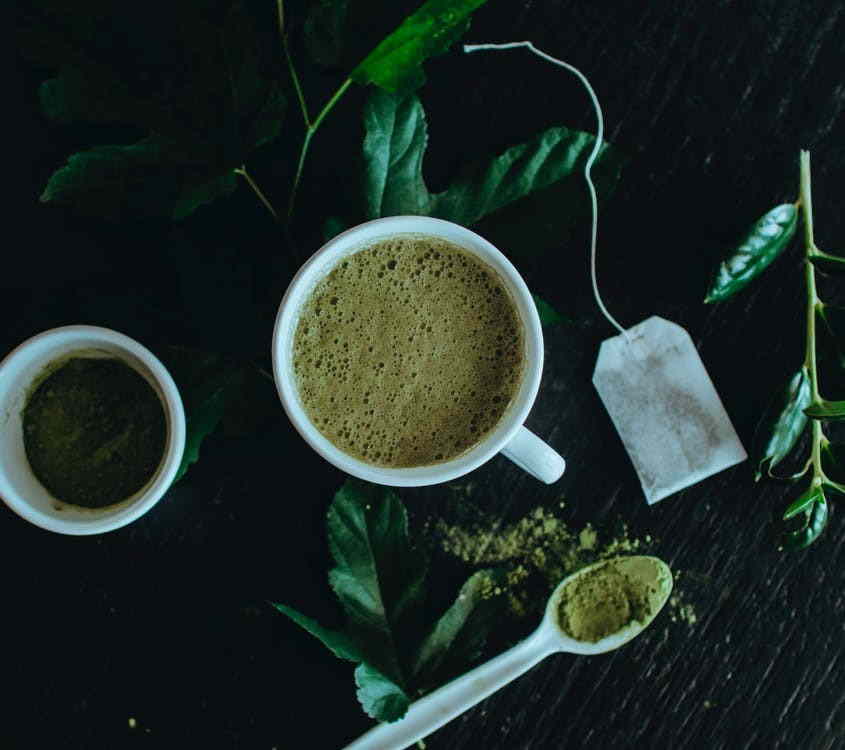In Japanese culture, tea isn’t only enjoyed between family and friends and drank for its health benefits, but tea is celebrated in the formal Japanese Tea Ceremony.
With this in mind, it’s no surprise that there are so many types of Japanese tea, with claims of there being over 100 different types of Japanese herbal tea! To help you narrow down your search, we explore seven of the best Japanese teas and discuss the health benefits of each, including information on which Japanese regions produce the most tea.
Types of Japanese tea and their health benefits:
1. Sencha
Sencha is a type of loose-leaf Japanese herbal tea, harvested from tea leaves that receive direct sunlight. If you prefer a bolder bitter-sweet taste, this form of green tea can be steamed for longer, whereas if you prefer a more subtle tasting tea, sencha can be lightly steamed. Sencha is one of the most popular types of Japanese tea which can be enjoyed hot or as a refreshing iced green tea.
Health benefits: Sencha is said to increase energy levels and aid in the appearance of healthy skin as it contains many antioxidants and vitamin C.
2. Matcha
Matcha is a type of powdered Japanese green tea, known for its vibrant green colour and is enjoyed for its sweetness. The tea leaves used within matcha tea are kept in the shade for up to three weeks before being harvested and processed into the green powder. The shade increases the level of chlorophyll in the tea leaves, which gives the tea its popular green appearance and increases the flavour of the matcha. Not only is matcha a popular casual drink in western culture, but it’s also a traditional Japanese tea prepared and served within the formal art of the Japanese Tea Ceremony, which dates back to the 17th century.
Health benefits: Matcha is said to be very cleansing and helps in increasing concentration.

3. Sobacha
Sobacha is a caffeine-free Japanese herbal tea. It’s also known as buckwheat tea as it’s produced from roasted buckwheat kernels which are found in soba noodles. Sobacha gives a nutty, earthy taste which can be enjoyed hot or cold. Sobacha is often enjoyed in the evenings due to its calming and relaxing natures.
Health benefits: Sobacha is known for aiding in a healthy heart, good digestion and helps boost your immune system. This caffeine-free tea often helps in getting a good nights sleep.
4. Kombucha
Kombucha tea gains its name from the term 'kumbu' which is a type of edible kelp. Japanese kombucha tea is made from powdered dried kelp, traditionally seasoned with salt and sugar. As a seaweed-based tea, kombucha gives a salty and tart taste.
In western culture, kombucha has grown in popularity. However, western kombucha differs from Japanese kombucha as it doesn't contain any kelp and is fermented to give a fizzy taste, whereas Japanese kombucha isn't.
Health benefits: As a type of green tea, you gain the benefits of increased antioxidants.

5. Genmaicha
Genmaicha is another variant of Japanese green tea. Traditionally, genmaicha contains brown rice to fill out the tea to make it more filling. When roasted, the rice can appear like popcorn, which is where the nickname ‘popcorn tea’ comes from. The combination of the roasted rice and the genmaicha tea leaves gives a nutty taste.
Health benefits: Genmaicha is said to help those with high blood pressure, be very calming and helps with having a healthy heart.
Mugicha
Mugicha is a caffeine-free tea made from roasted barley which can be enjoyed hot or cold. It is also known as barley tea as mugicha doesn’t contain any actual tea leaves! Mugicha tea is golden brown, and the barley found in the tea makes it very refreshing. Mugicha is often drunk cold on a hot summers day by all ages.
Health benefits: Mugicha is known for being high in vitamins, helps with digestion and keeps you cool and calm.

7. Gobocha
This Japanese herbal tea is made from burdock root shavings. Burdock root is known to have many health benefits, including reducing the appearance of wrinkles and helping with aches. Burdock root is commonly used in Japanese cooking and gives the tea an almost earthy, wood-like taste. An acquired taste!
Health benefits: Gobocha is very popular for its anti-ageing properties, helping in the appearance of fine lines and wrinkles. Gobocha tea also helps with colds due to the level of vitamin C found in the burdock root.

Which regions produce tea in Japan?
According to the Global Japanese Tea Association, “Japan is the 8th largest tea producing country” in the world. There are three regions which produce the most tea in the southwest of Japan; specifically the areas of Kagoshima, Kyoto and Shizuoka. Japan is known for its production of varying types of green teas, with a majority of sencha tea being produced within the Shizuoka region.
We hope that you enjoyed learning about these seven types of Japanese herbal tea. The best Japanese tea is one that you enjoy the taste of the most! Why not drink your tea in one of our authentic Japanese tea sets? From Japanese teacups and teapots, our beautiful Japanese teaware is perfect for making your cup of tea that extra bit enjoyable and authentic!
